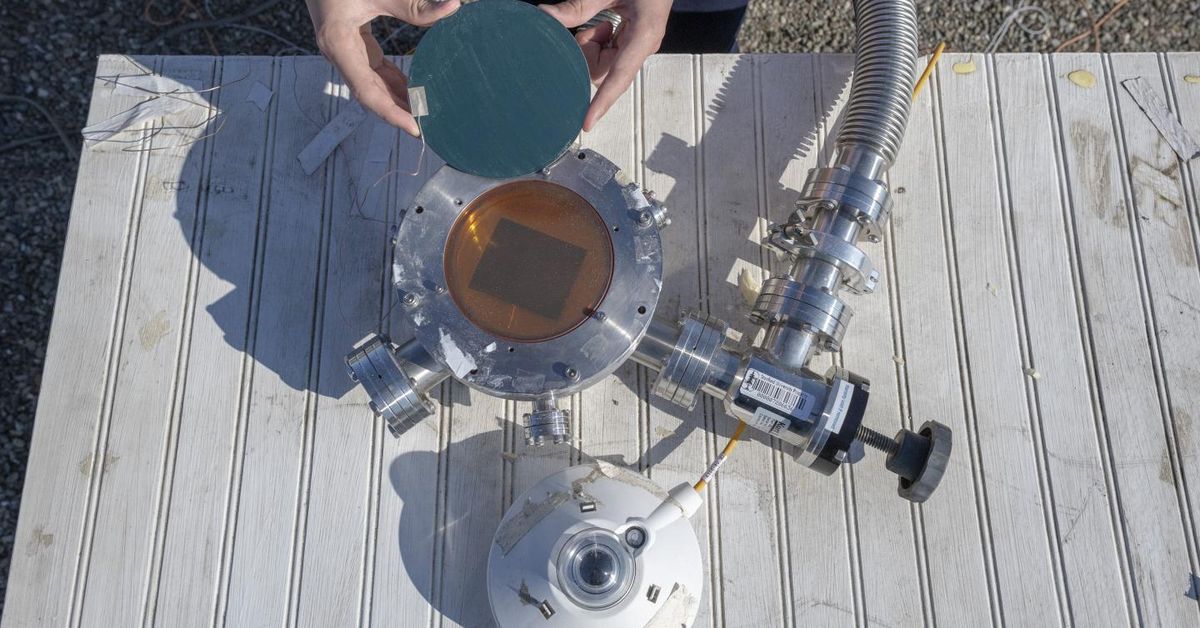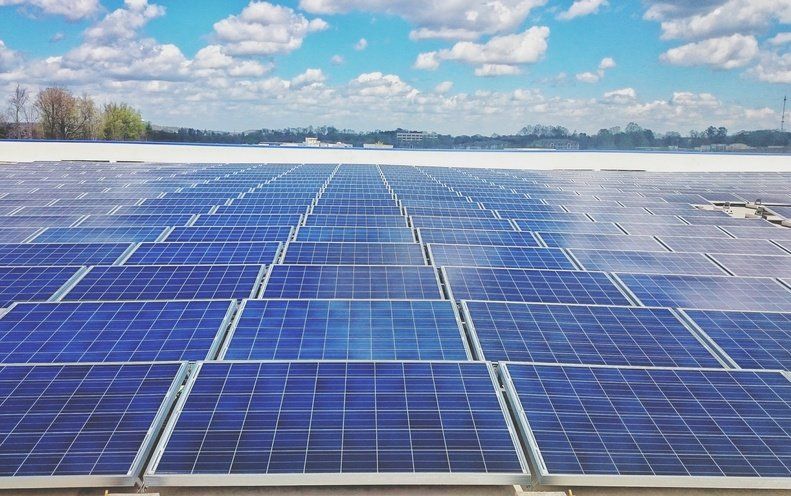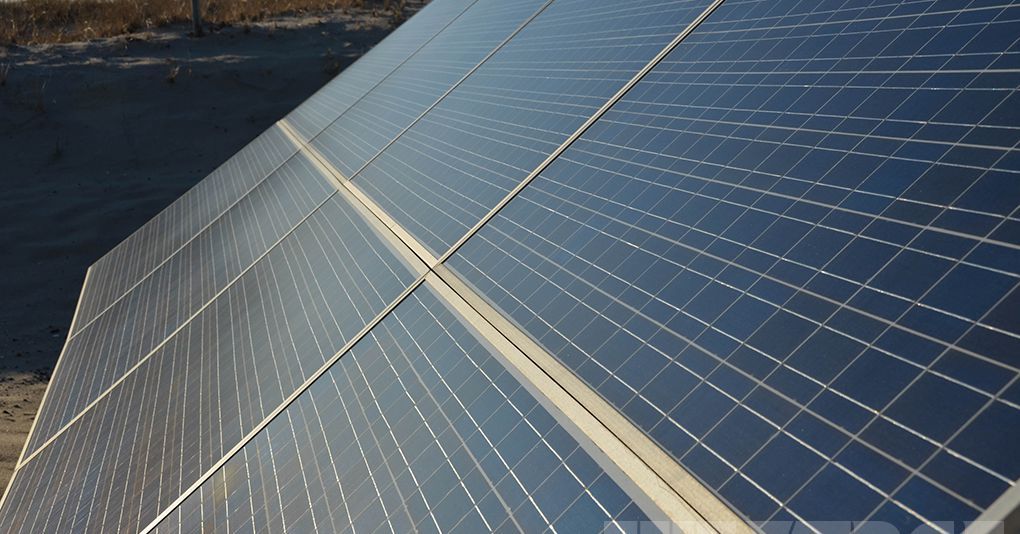Warm on top, cool on bottom.



No matter how abundant or renewable, solar power has a thorn in its side. There is still no cheap and efficient long-term storage for the energy that it generates.
The solar industry has been snagged on this branch for a while, but in the past year alone, a series of four papers has ushered in an intriguing new solution.
Scientists in Sweden have developed a specialised fluid, called a solar thermal fuel, that can store energy from the sun for well over a decade.

On Wednesday, November 7, NASA will launch its Ionospheric Connection Explorer (ICON) spacecraft to study the ionosphere. This boundary lies between space and Earth, being home to a “sea” of charged electrons and ions; it reacts to both lower atmosphere weather and solar energy, the result being space weather. NASA’s ICON will study this, offering unprecedented scientific data.

What if we could bottle solar energy so it could be used to power our homes and factories even when the sun doesn’t shine?
Scientists have spent decades looking for a way do just that, and now researchers in Sweden are reporting significant progress. They’ve developed a specialized fluid that absorbs a bit of sunlight’s energy, holds it for months or even years and then releases it when needed. If this so-called solar thermal fuel can be perfected, it might drive another nail in the coffin of fossil fuels — and help solve our global-warming crisis.
Unlike oil, coal and natural gas, solar thermal fuels are reusable and environmentally friendly. They release energy without spewing carbon dioxide and other greenhouse gases into the atmosphere.

Over the past few months, I was part of a study funded by the United Launch Alliance and supported by a large group of technologists to determine if we can mine water on the Moon and turn it into rocket fuel, and to do it economically. The final report can be downloaded here.
Why Mine Water on the Moon?
The lunar water would be launched off the Moon and delivered to a “gas station” in Earth orbit. This propellant depot will use solar energy to turn the water into rocket fuel. Then, space tugs can refill their tanks so they can repeatedly boost spacecraft from Geosynchronous Transfer Orbit (GTO) (where the launch rocket throws them) into Geosynchronous Orbit (GEO) where they can begin operating.

Florida has lagged in renewable energy use, but declining solar costs are set to change that.

One of the main methods of producing hydrogen for fuel cells is to use artificial photosynthesis to split water into hydrogen and oxygen, but these devices still suffer from some efficiency issues. Now a new hybrid device may be able to recover some of the energy that would otherwise go to waste, by producing both hydrogen and electricity.

https://paper.li/e-1437691924#/
Solar panels might be the energy source of the future, but they also create a problem without an easy solution: what do we do with millions of panels when they stop working?
In November 2016, the Environment Ministry of Japan warned that the country will produce 800,000 tons of solar waste by 2040, and it can’t yet handle those volumes. That same year, the International Renewable Energy Agency estimated that there were already 250,000 metric tons of solar panel waste worldwide and that this number would grow to 78 million by 2050. “That’s an amazing amount of growth,” says Mary Hutzler, a senior fellow at the Institute for Energy Research. “It’s going to be a major problem.”
Usually, panels are warrantied for 25 to 30 years and can last even longer. But as the solar industry has grown, the market has been flooded with cheaply made Chinese panels that can break down in as few as five years, according to Solar Power World editor-in-chief Kelly Pickerel.

Six-hundred million people in Sub-Saharan Africa lack access to electricity. To meet these power needs, a mix of large public-run utility grids and standalone systems will be necessary for universal access in the region. Governments, aid organizations, and scientists are working to understand which electricity grid solution would be most cost-effective and reliable across urban, peri-urban, and rural areas.
Standalone, or “decentralized” electricity systems—most often solar power with battery storage—are usually thought to be too expensive compared to large state-run grids in all but the most remote locations. However, declining costs of solar and new battery technologies are changing the best pathways to deliver reliable power to people that currently lack access to electricity. New UC Berkeley research published today in Nature Energy finds that decentralized electricity systems in sub-saharan Africa can be designed for extremely high reliability, and that this may come at remarkably low costs in the future.
Jonathan Lee, a Ph.D. candidate in the Energy and Resources Group (ERG) and Associate Professor Duncan Callaway worked with more than 10 years of solar data from NASA and developed an optimization model that determines the lowest cost way to build a standalone system given component costs and a target reliability. At current costs, their model indicates that most regions in Sub-Saharan Africa can get 95% reliable power—meaning customers can use electricity from some combination of solar panels and batteries 95% of the time—for roughly USD$0.40 per kWh. Though that cost is high relative to current grid costs, their model indicates that with aggressive but plausible future cost declines in decentralized system costs, largely in batteries, these costs would drop to levels competitive with the grid in many parts of the continent in less than a decade.

New houses could soon deliver on a long-awaited promise and incorporate windows or roof tiles that harvest solar energy, research conducted at KAUST suggests.
Derya Baran, at the KAUST Solar Center, and her colleagues have developed a photovoltaic organic material that captures light efficiently and that potentially could be coated on building materials.
Traditional roof-mounted solar panels are made from slabs of silicon, but organic molecules can also capture energy from sunlight. These molecules could be formulated as inexpensive printable inks that are applied to regular building components such as windows. Turning sunlight into electricity is a multistep process, and the key to developing high-performance organic photovoltaic materials has been to find organic molecules that are good at every step, Baran explains.